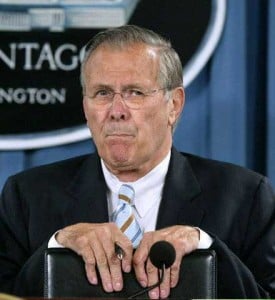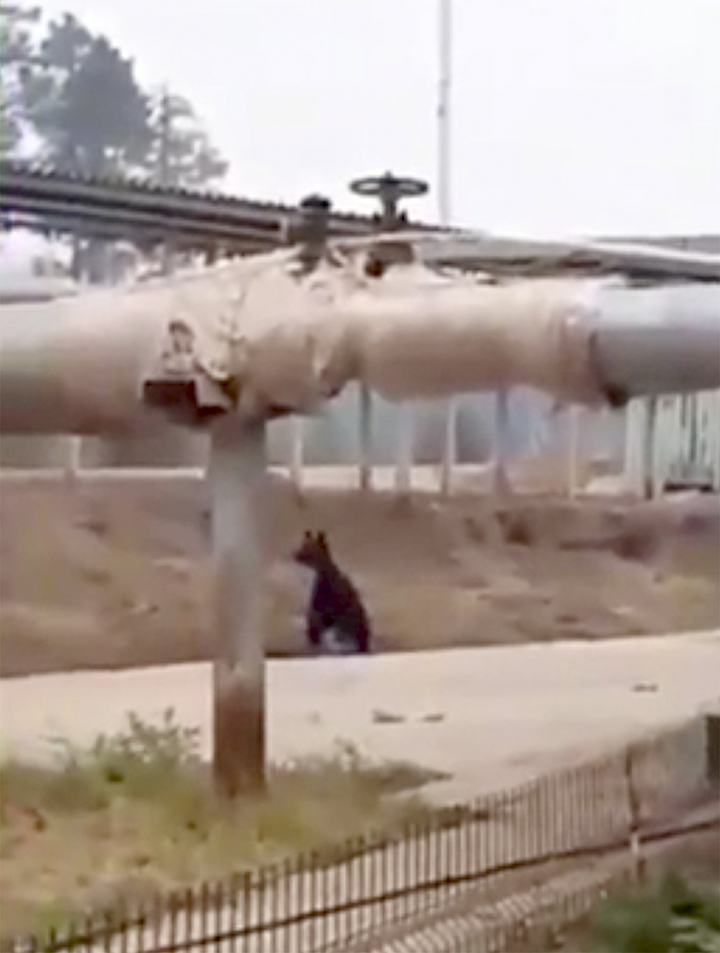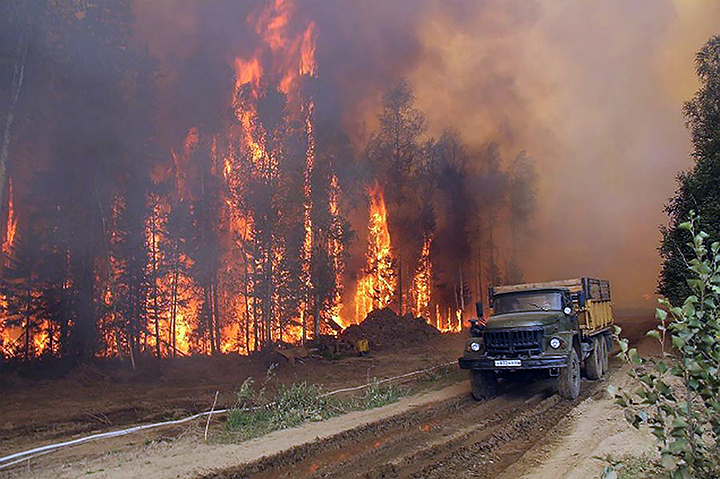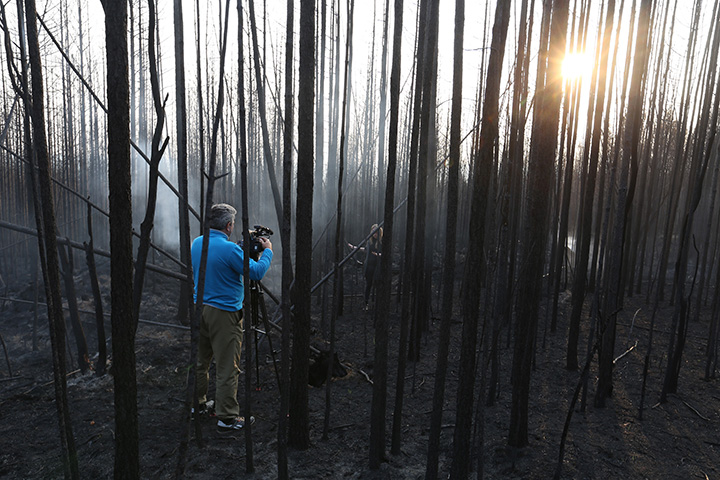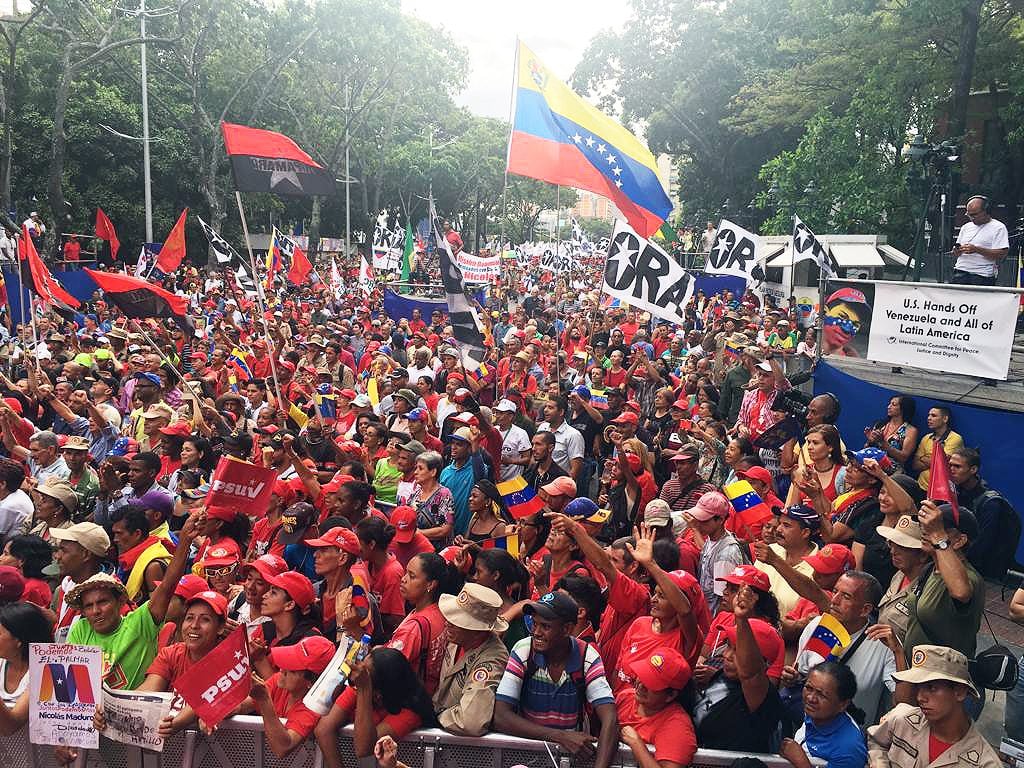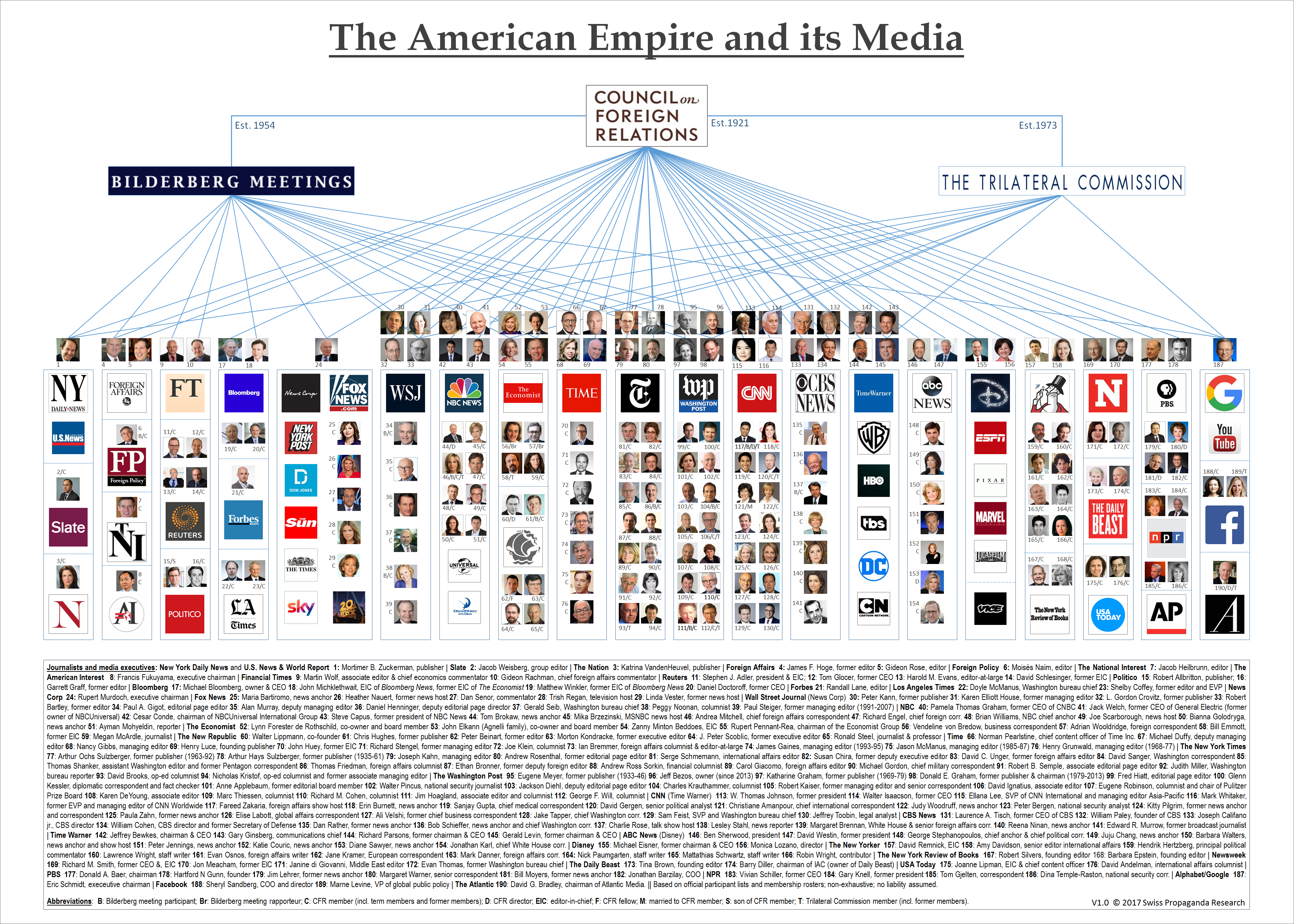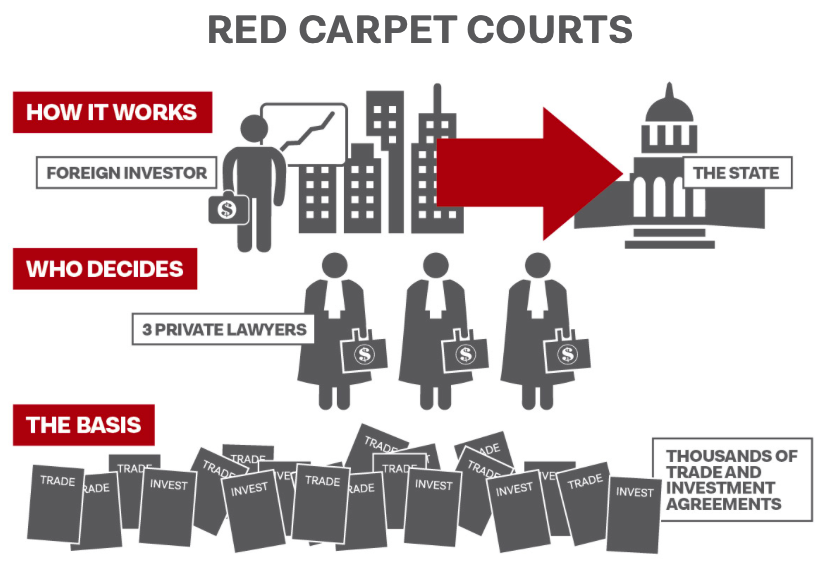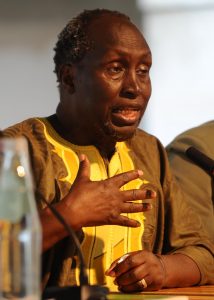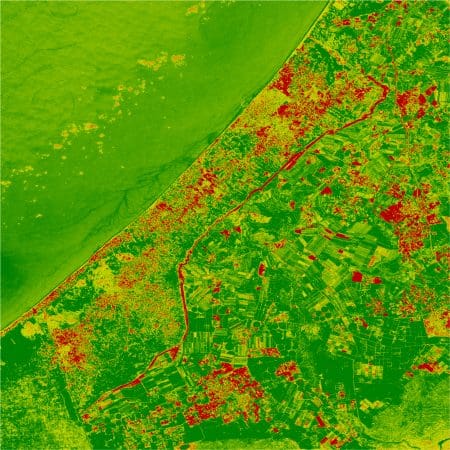“So, Canada, the Canadian people unfortunately are deprived of honest representation of provincial desires, provincial needs, by the fact that the financial sector, the banks, are pretty much running the country.” – Michael Hudson
On the weekend of July 19-21st, 2019, the University of Manitoba became the venue for the 14th Forum of the World Association for Political Economy (WAPE). This annual event represents a gathering of Marxist economists from around the globe, and aims to utilize current understandings on the subject to analyze and study the world economy, reveal its laws of development, and offer policies to promote economic and social progress on national and global levels.
One of the keynote speakers at this event was Michael Hudson. He had presented on his most recent paper, detailing how the world could defend itself from U.S. economic warfare.
 Michael Hudson is a prominent U.S. critical economist and President of The Institute for the Study of Long-Term Economic Trends (ISLET). A Wall Street Financial Analyst and Distinguished Research Professor of Economics at the University of Missouri, Kansas City, Dr. Hudson has acted as an economic adviser to governments worldwide, including Iceland, China, Latvia and Canada.
Michael Hudson is a prominent U.S. critical economist and President of The Institute for the Study of Long-Term Economic Trends (ISLET). A Wall Street Financial Analyst and Distinguished Research Professor of Economics at the University of Missouri, Kansas City, Dr. Hudson has acted as an economic adviser to governments worldwide, including Iceland, China, Latvia and Canada.
Dr. Hudson’s books include Killing the Host: How Financial Parasites and Debt Destroy the Global Economy (2015), J Is for Junk Economics – A Guide to Reality in an Age of Deception (2017), and his seminal work – Super Imperialism: The Economic Strategy of American Empire (1972), a critique of how the United States exploited foreign economies through the IMF and World Bank.
In an exclusive, wide-ranging interview with Global Research News Hour host Michael Welch, Professor Hudson explains how the Bretton Woods institutions came to be an instrument of the U.S. empire, the similarities and differences behind the paths to Chinese and US economic prosperity, the virtual impossibility of electing a genuine reformer to the White House, the case of Canada, and more.
Full transcript below:
Global Research: I wanted to dig down a little bit in some of the major developments you’ve seen on the international financial stage over the course of the last 75 years, but…I know that the United States economy has been quite pivotal in all of these developments, and you pointed out that these institutions of international financial order, the Bretton Woods institutions, the IMF, the World Bank, there was a…ostensibly conceived to promote a more peaceful world order, but they’ve turned into instruments of extending U.S. nationalism, predatory rent extraction, and increased militarism.
So I guess I wanted to get some sense from you… What were the key ingredients that led in that direction? Were the seeds always planted for that development? Or were there key moments where we’ve seen that transition to this very much more asymmetric dynamic?
Michael Hudson: Well, every country and every class always represents its own interests as being that of civilization. Rome described the conquest of its empire as extending civilization, America does the same. In the case of the World Bank, the United States created a system where it would only make loans in dollars in foreign currency, not domestic currency at the countries, and instead of helping finance their development, it only would finance their dependency. To create… for instance their land was to be used to grow export crops, competing with each other, crops could not be grown in America’s latitude but tropical crops, they were not to grow grain or wheat or soybeans or anything that would compete with the American agricultural exports because agriculture has always been the bulwark of America’s trade balance, much more than industry.
The World Bank also, instead of making loans to develop transportation infrastructure for what you normally see with a city urbanization, domestic use, urban development; financed transportation almost exclusively to help the mining interests and the extractive interest, the raw materials interest. The World Bank would provide infrastructure to lower the cost to multinational corporations involved in mining, minerals, oil, and gas. So basically, it was all to support American investment abroad from the beginning.
The International Monetary Fund was the same. The guiding philosophy of the International Monetary Fund is they will make loans only at the supported currency in trouble. In trouble means when a currency was about to collapse in Latin America or elsewhere, the International Monetary Fund would help the oligarchs, the local wealthy people, transfer their money out of the local currency, pesos, escudos, out of the country at a supported high exchange rate for the dollar. Then they would let the exchange rate fall and the country would be left with debt, and the guiding philosophy of the International Monetary Fund was any country can pay any volume of debt without limit as long as it can impoverish the labor force by reducing wages and imposing austerity.
So the IMF promoted American prosperity, and at the cost of austerity, falling living standards, falling public investments in its client countries. That’s why when 2008 occurred, by that time, the last IMF client, Turkey, I think, had repaid foreign debt, and other countries said we never want the IMF in our country again.
Because the IMF would do what it calls stabilization programs. These were really destabilization programs. They would say, the country can pay the debt, you’ve already impoverished your workers to such a low level that you’re in a depression, there’s no internal market, you have to pay your debt by privatizing your public infrastructure. You have to sell off all of the natural monopolies that every country for hundreds of years has kept in the public domain.
Not only the mineral rights and oil rights that were in the public domain but the transportation system the electrical system, especially, the ports, the airports, everything that was public should be sold to pay back the IMF for the subsidy of the capital flight by the wealthy.
And most of this capital flight was into offshore banking enclaves that were set up by the U.S. government around, after 1964, when the Vietnam War was causing extreme balance of payment crisis. I was at the Chase Manhattan Bank at that time, and a State Department person came to me and said, the entire deficit of the Vietnam war is military. We have a problem. How are we going to pay for a military deficit all over the rest of the world? 800 military bases… They said there’s one liquid supply of capital throughout the world. There’s one class that has a higher savings rate than any other class. And that class is the criminal class. The drug dealers, organized crime, tax evaders, and corrupt government officials.
And so, they decided, they said, what we will do is create offshore banking enclaves, very much like Panama and Liberia for the oil sector, which was already set up, but we’re going to set them up throughout the Caribbean. England did the same thing. So America established Caribbean islands with no taxation, no questions asked, little Panamas, little Liberias. And in England’s case, you had the British Caribbean islands declare independence, and then they reversed their independence so they could be part of the English area, and so that they would be using sterling and be exempt from any foreign exchange, any currency devaluation.
So very quickly, the American Banks and the British Banks established branches in these islands that were very poor islands, and all of a sudden you had all these huge Bank branches there. So brokerage firms came to me and asked me to compute statistics. We would look at, you can look at the United States government and bank foreign liabilities too, like Anguilla and all of the other offshore banking enterprises
Foreign liabilities means these are the deposits we have there. And you’d have foreign liabilities to their own banks and so the criminals, the drug dealers, the cocaine cartel, all sorts of… And tax dictators would put their money in the islands, in the banks. The island branches of the New York banks would then take this money and lend it to the head office, and this money was exempt from reserve requirements because it was foreign, and so it was a source of very inexpensive capital at the American banks. So it was really the United States that organized the world’s capital flight, offshore banking centers, and the IMF role was to support the dollar, to support the currency, and to support capital flight from other countries into the US dollar.
This was not really international at all. The World Bank, some years, I think on it’s 50th Anniversary, called a book celebrating its success Partners in Development. It actually should have been called Partners in Backwardness because the effect was to under-develop countries, to unbalance them, to make them export enclaves, while the IMF’s role was to keep down the price of labor and essentially carve up the public domain and privatize it, to do to Latin America, Africa, and the Near East what Margaret Thatcher had done to England.
GR: Now, you mentioned the developments springing from 1964, the Vietnam War, and it occurs to me it was only a few years into that war that you start to see that the gold standard has been exchanged for US treasury debt. Could you comment a little bit more on that decision and maybe the timing of the decision and its impact?
MH: Well, in the years from World War II up to 1950 when the Korean war was breaking out, the United States increased its supply of the world’s gold to 75%. It was by far the largest holder of official inter-governmental gold. When the war in Korea began, that started a long generation of deficits in the United States balance of payments. In the 1950s and the 1960s, I have the charts in my book Super Imperialism, the private sector was just exactly in balance for the United States in the 1950s and 60s. The entire balance of payments deficit of the United States was for military spending abroad, not only the war in Vietnam but the spread into other countries the bases we had all over, the political bribery and influence over foreign countries.
So it used to be… by the mid-60s, again when I was Chase Manhattan Bank’s balance of payments economist, every Friday the Federal Reserve would publish, the papers would publish the US gold holdings and the currency. And at that time every physical U.S. dollar, the paper money, had to be backed 25% by gold. And we would see week by week as General De Gaulle, but also Germany, without being so vociferous, would, cash in the dollars from gold. Because Vietnam, Laos, and Cambodia were all part of French Indochina, the banks, they were all French, so the army had to use French banks to send these dollars spent by the military back to the head office in Paris and De Gaulle would then immediately cash in the dollar inflows into gold.
So we were forecasting exactly at what point the United States would have to close the gold window. The United States was selling gold on the London Gold Exchange to keep the price down to $35 an ounce because it had said the US dollar is as good as gold, and by keeping the US dollar tied to gold, that kept basically a hard money position. It prevented other countries from financing their own economies with their own money and tied them to, it limited their international spending to their access to dollars or to gold, and the United States feared losing this connection with gold because then it couldn’t create an artificial limit to other countries spending, and other countries might not be subject to poverty. And the objective was to impoverish as many of your trading partners as possible so that you could invest and take over their industry and other public domain.
GR: Yeah, we’ve seen of course the rise of China, the Chinese economy which is followed a very different path to its current status, so I wonder if you could maybe point to what the key ingredients there were there that enabled it to the point that it situated to perhaps overcome the United States as an economic power.
MH: I’m not sure what you mean I’m not when you say they followed a different path. China’s falling the identical path to the United States in the late 19th century. After the Civil War, the Republican Party governed the United States, it was a protectionist party, it developed American infrastructure, public infrastructure, as what it called a fourth factor of production alongside land, labor, and capital, you had public infrastructure.
But the role of public government investment in railroads and transportation and public health and education was not to make a profit, unlike private investment. It was to lower the cost of living therefore lower the cost of doing business by lowering the break-even price of labor and enable American industrialists to employ a labor force that had its education paid for by the government. That had the transportation provided freely or on a subsidized basis that was healthy, agriculture that had agricultural extensions services and support and government marketing services. So America became a mixed economy. Certainly not a socialist economy, but with a very active government support of the private sector to increase the profitability of the private sector by essentially taxing unearned income, taxing basically rentier and… rent and interest.
When the income tax was introduced to the United States in 1913 by Woodrow Wilson, only 1% of Americans had to pay the income tax. Only the wealthy Americans had to pay, and the wealthy Americans were the property owners who got almost, whose income consisted almost entirely of interest, dividends and land rent. And so, in effect, America was taxing the unproductive rentiers, the people, the classes that ruled Europe and avoided taxation in Europe, and its subsidized industry. And that’s why America was able to subsidize its industry to overtake that of England.
Well China is doing exactly the same thing. Except it’s doing it in a socialist way. It’s developing a public infrastructure, public transportation, free education, and because it provides its population with so many public services, it’s not necessary for employers to pay their employees enough to cover the cost of student debt. Their employees don’t have to earn enough to pay student debts. They don’t have to earn enough to pay… the average rental in Manhattan, I live in New York, is $4,500 a month. Well you can imagine that rents are much cheaper in China.
America is now de-industrialized by turning into a financialized economy run by the finance, insurance, and real estate FIRE sector. China has been able to avoid that primarily. So it’s been able to avoid the post industrialization policy of the United States by following the original industrialization policy, and obviously it works. It’s the antithesis of free trade, it’s the antithesis of neoliberalism, China is not… and the banking especially is in the public domain.
In the United States, if a corporation borrows money to pay higher dividends, or borrows money to buy its own stock, or simply uses its earnings to buy its own stock and push up the price, instead of investing, will sooner or later this corporation’s going to go bankrupt. And in such cases, like Sears Roebuck for instance, the corporation’s bought out by a hedge fund that then loots it all the more and takes all the assets, spins them off, essentially at breakup cost, and leaves an empty financial shell.
Well China’s credit to corporations is provided by the Bank of China, and if a corporation can’t pay, China doesn’t say, well you’re going to have to fire all your employees, you’re going to have to downsize and sell off I guess to whoever wants to buy it, China will say okay we’re forgiving the debt. So China does not impose a debt peonage on either its population or on its corporate sector, because the government is the creditor, not the private banking systems.
That’s the big difference between China’s development. It is… It is free of the sort of financial suicide that the United States and Europe are imposing on themselves because the financial sector, the banks and their brokerage houses finance most of the election campaigns in the United States, and the U.S. Treasury here, the Foreign Office finances many of the election campaigns in Europe. Presumably Canada too.
GR: Well speaking of Canada, Canada has a publicly-owned central bank, the Bank of Canada, which was in existence from the mid-30s to 19…it was being used to finance a lot of these same sorts of projects, public programs infrastructure and whatnot, and for whatever reason in the 1970s, they abandoned that use of the Bank of Canada, embraced monetarism, and now we find ourselves in a situation where we’re borrowing from private banks at higher rates and interest, or have been, and we’ve seen the deficits skyrocketing.
You’ve been an advisor to the Canadian government in the 1970s. What insights do you have into why Canada pursued the path it did as opposed to the path we see China pursuing?
MH: It was a very clear path, and the reason for the changing of the Bank of England was the banking influence. When I was adviser to the government, I published… The government made a last-ditch effort to oppose the banking interests and published my pamphlet on Canada and the new monetary order. That was done in 1978 and 79. At that time, since the Bank of Canada was not simply printing the money to enable the provinces such as Manitoba to … build their public infrastructure, they had to borrow. And the question is, who are they going to borrow from and at what interest rate?
Domestic Canadian interest rates were very high because there were, there’s a monopoly of banks here that controlled its interest rates, and it was maybe 5% or 6%, but the provinces were advised by the bank to borrow German marks and Swiss francs at only 2%, two and a half percent. And said, look, you can pay much lower interest on your borrowing even though the Canadian government isn’t printing the money so you can get it for free, at least you can get a low interest rate. Well, they…the banks made enormous underwriting fees in advising Manitoba and Ontario and other provinces, Alberta, to borrow abroad. To arrange Swiss and German loans.
Well, my point is, I went around Ottawa, Toronto and Montreal with the following argument. A province like Manitoba will borrow say a hundred million dollars from Germany, what happens? German investors will buy bonds for a hundred million marks. These marks will be put, sent to the Bank of Canada and translated into Canadian dollars because Manitoba and the other provinces spend, if they’re going to build infrastructure, they spend their money in Canadian dollars. They pay their labor in Canadian dollars, they pay for their raw materials in Canadian dollars, and so, the Bank of Canada will now have in its foreign reserves a hundred million dollars of foreign currency, German marks, and the Canadian provinces will have a debt of a hundred million dollars denominated in German marks.
Well there’s no… I said in either case the Canadian Central Bank has to simply print the money. It has to print the hundred million dollars in Canadian dollars for you to spend. Why do you need the Germans or the Swiss to lend you money if all the money is going to be printed by the Bank of Canada? Well, the bankers said, and they actually claimed this, they said we’re the honest broker. We know much more than the government because we’re the private sector, and as you all know, the government in Canada is thoroughly corrupt, especially the Liberal party at that time, and they said, we know that the government is so corrupt in Canada, and it’s so stupid that we pay very high prices to advisers to give good advice, and if the government prints the money it’s inflationary, but if we tell the government where to print the money, that it’s not inflationary. I said this is absolute nonsense, and in fact you’re taking a risk.
Well, at the time I wrote the book, I think the Canadian dollar was something like a $1.06 in U.S. terms, it began to plunge down to $0.80. Now just imagine, if the Canadian dollar goes down to $0.80, it has to still pay back marks. The mark increases from, by… all of a sudden, 30%. So the actual interest rate that Canada ended up paying was 10 to 15% a year, and that doesn’t count the enormous fees that it paid the banks. So what they claimed was intelligent private advice was very bad advice, and I talked to the banks, and it was obvious they have one way to make sure that their claim that governments are stupid and private people are bad, and that is telling the government only appoint stupid people to the banking system. Have people that are drawn from the banking sector, whose loyalty is to their head offices, and the Canadians realize that this private enterprise philosophy is simply a self-serving patter talk by the banks to try to get a candidate to follow a self-destructive policy that has impoverished the provinces and made them pay needless amounts. While the provinces have been impoverished, the banks made enormous underwriting fees in all of these bond issues.
The banks even called in a Jesuit priest who said if the government decides where to lend money to the provinces, that way leads to the gas chambers. He said, that’s Nazism – that’s fascism. And the bank said that’s right. To have a strong government that’s fascist, you need us, the private sector. What they didn’t realize is that Canada, before the Bank of Canada was closed down, was more or less decentralized.
In World War II, C.D. Howe centralized Canada and government in Ontario at the expense of its provinces, but Canada is now a centrally planned economy. The economy is planned by the banks and by the US state department, and the pretense is that if the planners are in the private sector, it’s not a planned economy. But that’s crazy! The banks lobby for the government, they pay for the election campaigns, they outright bribe the government, and if they don’t do the bribery because that’s illegal, they have the U.S. State Department and the US banks do the bribery. So I’ve been told by the U.S. Treasury officials.
So, Canada, the Canadian people unfortunately are deprived of honest representation of provincial desires, provincial needs, by the fact that the financial sector, the banks, are pretty much running the country.
GR: I wonder if that… is there some sort of a reflection of its former, its colonial status versus a British colony, and then effectively as a U.S. colony making them somewhat vulnerable to these financial, or these private bank snake oil salesmen as it were.
Getting to your talk about the major alignment that other countries can align with against this U.S. imposed financial aggression, I question…. What would you say to those individuals who might say, well, are you just…given that China is such a powerful country in its own right, that alignments with China might just be… Where China is potentially exploitative just as the United States is exploitative but maybe not as nasty an exploiter. Are we talking about a fundamentally different alignment to protect from…While we’re protecting from financial aggression in the United States, are we making themselves vulnerable to Chinese exploitation?
MH: The question isn’t really whether you’re going to follow America or China, but what kind of economy are you going to create? Are you going to create an American-style, European-style economy that is shrinking, that is struggling with debt, that the financial sector has driven the rest of the economy further and further into debt, and is essentially making your economy debt-ridden and unproductive and high cost of housing, or are you going to follow a policy that right now China is leading, that Canada was following before 1974, of having the government create the money, not borrowing the money from the private sector, that when the government creates the money, it’s for tangible public investment and useful investment, not simply to inflate housing prices or find corporate takeovers, or pay for a financialization?
The Canadian banks have lent increasing amounts of money to all the big Canadian corporations, especially the airlines, if you look at Canadian airlines, they’ve become increasingly debt-burdened and that’s increased their cost of doing business, and they’ve had to cut back their efficiency, cut back their spending, cut back costs, and are falling way below the quality that they had 40 years ago when I was going back and forth to Canada.
So it’s not China versus the US, it’s whether you want a Thatcherite, neoliberal policy that’s going to impoverish you and leave your corporations bankrupt, and let the United States exploit you again and again, and from the auto pact agreement in the 70s down through NAFTA, or are you going to act in your own economic self-interest?
You don’t have to join China to act in your economic self-interest. You don’t have to join China to return to a Bank of Canada like it used to be, to free yourself from the banks. You don’t have to join China to have a tax policy that lowers the price of housing by imposing a ground rent, a basic rent allocation, so that all of the rent won’t be paid to the banks as interest.
You can lower the cost of business by deleveraging the economy. So it’s just… They’re trying to frighten you when they’re trying to talk about the yellow peril dependency on China. What really it is, it is not a war of America against China. It’s a war of do you want feudalism and debt peonage or do you want economic survival.
GR: You know, there’s a state known as psychological projection in which you will… it’s a defense mechanism where you avoid… it’s an unconscious tendency to avoid certain qualities in yourself and you deny them in yourself and invoke them in others. I’m reminded of that syndrome when I hear U.S. entities saying that China’s wireless technologies and Huawei are using back doors and certain cybernetic mechanisms and that’s a way of dissuading customers from embracing that technology. Like Trump saying the Chinese are stealing your secrets or whatever…
MH: Well psychology, national psychology is certainly very important. Because the year after I wrote the report on Canada and the new monetary order, how it should create its own credit, they made me a consultant to the Department of State here, which is your education department, working on what kind of culture, cultural spending should Canada spend to make Canadians more self-sufficient and more immune from the neoliberalism and Thatcherism. So I worked for a year on a report, you know, I think you should subsidize your film industry much more, what kind of curriculum do you have to have an alternative to that Thatcherism.
As you probably know, for your, in terms of the film industry, one of Canada’s major exports is comedians. Most American comedians have come from Canada. And the reason is pretty obvious. How else do you cope with the society that doesn’t work? I mean either do get angry and have a breakdown or you become a comedian, and that’s sort of a by-product of the mess that Canada’s in.
Well I didn’t… they gave me a landed immigrant status in Canada, but I never came up here because I realized the balance of forces, there was nothing that a single person such as myself could do when all of the billions of dollars of bank lobbying and political corruption was already in place, so I haven’t been back for many years, except for my friends in British Columbia where they are trying to have a land tax, they are trying to have a tax policy that will fund domestic urban and provincial development without the financialization, without the rentier overhead that you have in the rest of Canada.
GR: In the U.S., it seems as if they somewhat painted themselves into a corner. There’s no chance of them developing a kind of more industrial based economy as opposed to the financialization capital that we’ve seen. That being said, we do see movements within the United States that are trying to push for a more progressive focusing on, you might call it, New Deal type policies, even a Green New Deal. And they seem to be rallying around certain candidates. I mean Bernie Sanders in the last election is a very famous example, and it seems like we’re seeing it again with his next round of democratic candidates.
I know that you were an advisor to Democratic candidate Dennis Kucinich about 15 years ago. Could you talk about lessons you learned from that campaign, what you saw what you heard that gives some sense of the pressures that the candidates are under and what is possible given the current political dynamics?
MH: Well, the problem is the American political system that’s very different from the parliamentary system of Canada and Europe. If this were Europe or Canada, the progressive forces in the United States could simply form a progressive party. They could call it the Socialist Party or whatever they wanted to, but they could form a party, and immediately you would have the mainstream of the Democratic Party, the Hillary Clinton-Obama right wing that is controlled by the donor class on Wall Street, that would fall to about 8%, which is a level to which the German Social Democratic party has fallen and other Social Democratic parties that are right-wing parties in Europe.
But the way the United States has been set up, there could only be two parties. Bernie Sanders ,for instance, was a socialist, thought of running as a third-party, but it was very clear, his lawyers made clear, that the difficulty of getting onto a ballot even to run for president is so difficult, especially since Ross Perot ran, tried to run as a third-party candidate, that it’s not possible to be elected and to have a congressional following to support the laws that you’d want to put through.
So the only access to policy and law making in the United States is either the Republican or the Democratic party. Even though the Democratic party is the right-wing party in the United States, its role is to essentially protect the Republicans from any left wing criticisms by sort of following it further and further and further to the right, claiming that, well, we’re not as far to the right as they are, we’re closer to the center, hoping to get the Centrist votes. Hillary Clinton called that triangulation, although it’s just really moving to the right.
The problem is, the only way that you can gain control of the democratic party is to make sure…. Is not to run a third-party candidate, but the equivalent is simply not to vote. There’s been a feeling on the left in the United States that you have to have the Democrats lose again and again and again to show them that they cannot win any election until you get rid of the Democratic National Committee which is a private, legally defined as a private club, under the American laws the Democratic National Committee, a smoke filled room that selects the president, does not have to follow the votes at all.
The primary votes where you vote in every state for who you would like to be president and other officials are only indicative in the United States. You don’t have to follow them, and they have a whole group of the main donors, the representatives of Wall Street, financial interests, the insurance industry, all outweighing the votes of the popular people. So they obviously, the left-wingers such as Bernie Sanders, want to run for president as a kind of educational campaign to make their policy clear to the people, but they know that there’s no way in which the ruling class will let them win.
It’s been very clear, if they did win, they would be assassinated very quickly. I’ve been told that by presidential candidates. The threat is, you’ll never be president, we have ways of keeping you out, and should you succeed, we will do to you what the Romans did to every advocate of democracy century after century, assassination.
So all that Bernie Sanders and his followers can do is outline a program and then expect their followers to stay home. So we’re going to have Donald Trump probably elected very strongly in the next election because the right wing of the Democratic Party is going to support a right-wing candidate that is almost as bad as Obama. It will be someone like, they would like to have Biden, who represents the state of Delaware. And in America, Delaware is a state where most corporations are located for legal reasons because the laws are so pro corporate and anti reform.
Or Kamala Harris, a Hillary backer, and a right-wing neoliberal such as Mayor Buttigieg who’s been pushed by the people who were financing Biden and the Wall Street interests. So you’re going to have a heavily financed Wall Street candidate against reform candidates, and the reformers certainly don’t have a chance in next year’s election. They probably won’t in 2024. We’re talking about decades of poverty, and the United States will probably remain in the Post Obama depression that it’s been in since 2008, where are all of the growth, the little growth that there has been in American GDP, all the growth has accrued to only the richest 5% of the population.
For 95% the American population, the GDP has been declining. And that is probably going to continue under Trump. He’s following policy of antagonizing the rest of the world. I would expect that he would probably win the Nobel Peace Prize somewhere around 2022 for integrating, driving the whole world together, integrating the whole world into a common front against American aggression. And that’s why foreign countries seem to be applauding him.
GR: It seems that both Democrats and Republicans have driven China and Russian together currently, so that’s a pretty significant step. Maybe my last question then is… Are we looking at an inevitable collapse as with Rome, an inevitable collapse of the U.S. system, with China and the other aligned countries just sort of taking off by default, or do you see any prospect, I mean this being the anniversary of the Winnipeg General Strike, that popular movements within the United States and perhaps Canada could somehow soften the blow or redirect it in a more positive direction?
MH: I don’t see any popular movement yet. You can very easily see why collapse is inevitable. All you have to do is look at the rising debt, personal debt, the rising corporate debt, the rising provincial or state debt, and it’s growing exponentially. And exponential, every interest rate is a doubling time at a certain point. The rule of 72, you simply divide 72 by the interest rate and you get the number of years in which the debt is doubling.
Canada’s debt, personal debt, is doubling very fast. The government is keeping the debt in place in the U.S., Europe, and Canada by low interest rates, so the interest rate charges are very low, but the debt keeps rising and absorbing and diverting more and more income, so Canadians have less and less to buy goods and services that Canada produces after they pay their rising housing costs, after they pay their bank debt, after they pay their monthly nut to the utilities, everybody I’m sure knows from their own experience that they have less and less to pay for goods and services and that is going to continue to shrink the economy.
There’s no way of knowing when there will be a break in the chain of payment. Usually it’s a bankruptcy of a big company, very often by fraud, as the 2008 crisis was bank mortgage fraud. You don’t know when people will fight back. Often, surprisingly, they only fight back when things are getting better. But things still have a way to go to get much worse in Canada, much worse in the United States, so I don’t see any possibility of reform within the next 4 to 8 years.
GR: Well, Michael Hudson I really appreciate your sharing and availing us of your understanding, your unique understanding of these major developments in the international financial system. Thank you very much for your time.
MH: Glad to be here. Thank you for having me.
